Stretching nearly one million square feet, the historic Art Institute of Chicago houses approximately 300,000 works of art, ranging from ancient artworks to work being created by today’s foremost artists. The use of color tunable lights on their one-of-a-kind collections has made the Art Institute a pioneer in the fine art museum world.
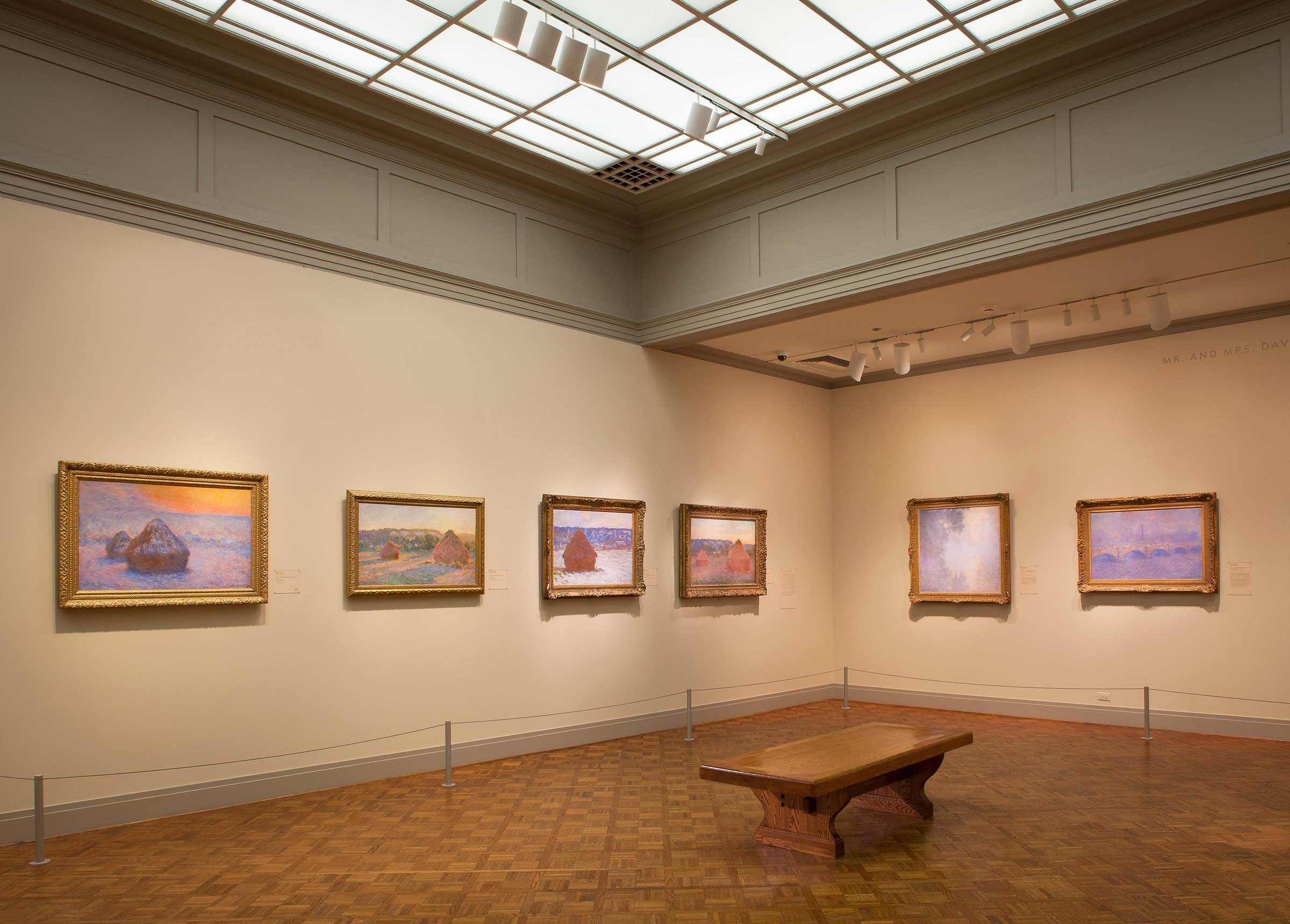
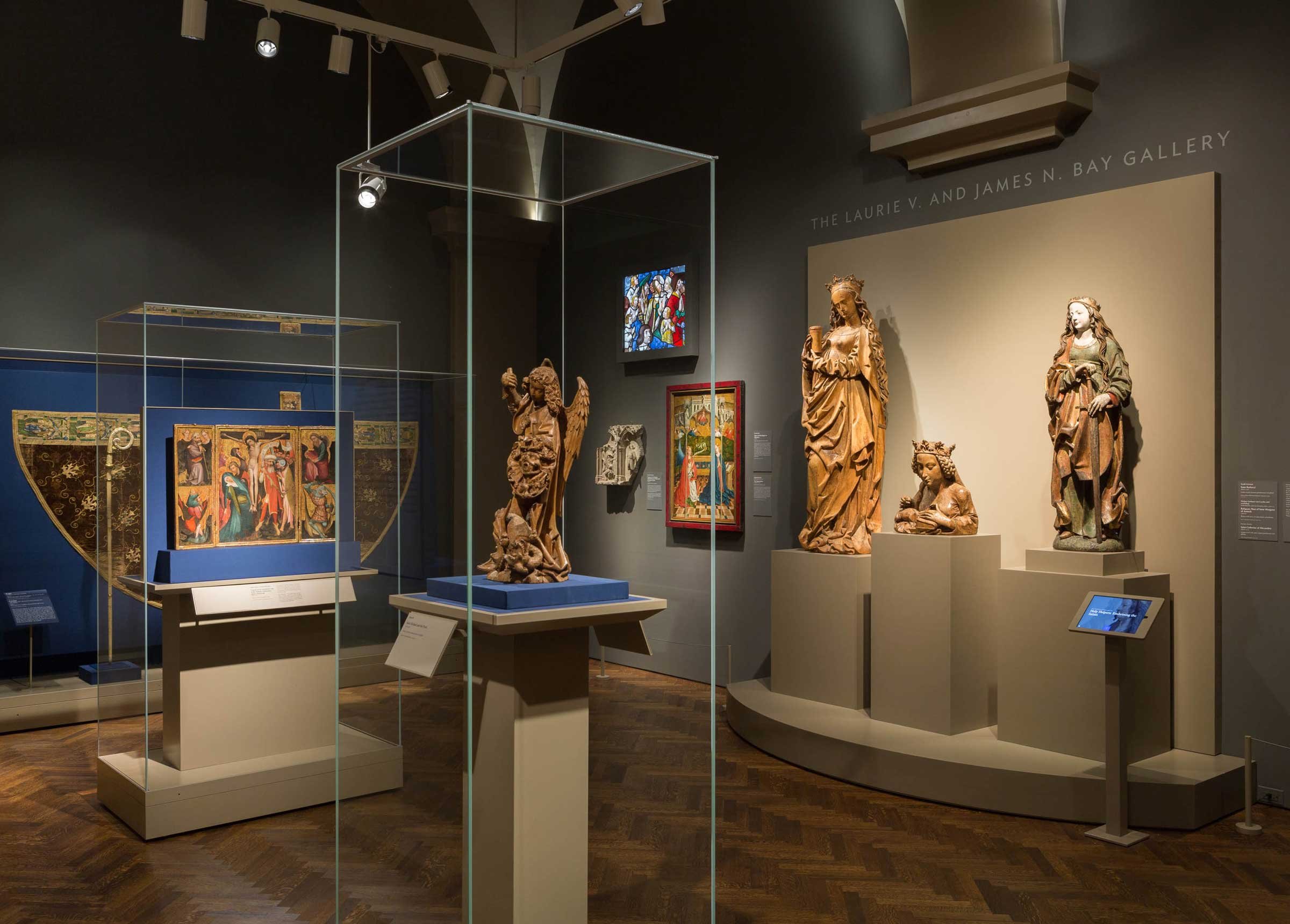
With a mission to collect, preserve, and interpret works of art of the highest quality, it made sense that the Art Institute wanted to explore a color-tunable solution that would enhance their art collections without compromising their long-term preservation.
The museum’s Director of Architectural Project Management & Planning, Kerri Callahan, along with the Conservation and Science team launched a small pilot research program to evaluate Ketra’s color tunable lamps and their effects on art materials that are known to be particularly light-sensitive, such as watercolors and chromogenic photographic prints. They wanted to make sure Ketra lights would not affect the preservation of their priceless collection of works any more so than the lighting systems that were previously implemented.
First, the team measured the lamps’ spectral power distribution curves at various correlated color temperatures and vibrancies, with settings simulating possible gallery conditions. Then, they calculated relative exposure damage, finding that relative to the theoretical blackbody at 2,850-3,000K without UV filter at 400nm, Ketra LED lights showed comparable or slightly less damage potential to the artwork. The results of their comprehensive evaluation opened new possibilities for Curators, Conservation and Lighting Design teams to work with a full-spectrum color toolset when deciding how to light their artwork.
“We always want to make sure the objects are seen in the best possible light, while minimizing the potential floor light-induced change, but also take into consideration the location and type of light the original piece may have been created in.”
-Kerri Callahan, Director of Architectural Project Management & PlanningA unique demonstration for what color tunable lights can do is Saint Catherine of Alexandria, a wood polychromy sculpture from the early 16th century.
Museum conservators had always noticed that standard gallery lighting left Saint Catherine’s complexion chalky. Ketra’s lighting system offered a controllable medium for Kerri Callahan to tweak color temperature, vibrancy and optics to create the right effect. After experimenting, Kerri was able to achieve the desired effect by tuning one lamp at the sculpture’s body and another at its face. A more balanced Saint Catherine of Alexandria came to life. One lamp at 2,850 Kelvin(K) (90% dimmed) pointed towards Saint Catherine’s dress, rendered it gold and glistening. Another lamp at 2,700K (90% dimmed) pointed towards Saint Catherine’s face, brought out warm tones in her face like never before. Both lamps were left at 0% vibrancy to ensure true color rendition on the object.
After optimizing the light for Saint Catherine, examining the full effect in situ was the next step to balancing the gallery’s lighting. The sculptures displayed next to Saint Catherine are made of wood as well, but have less of their original polychromy. Balancing the light on neighboring objects ensured that the collection was properly and holistically illuminated.
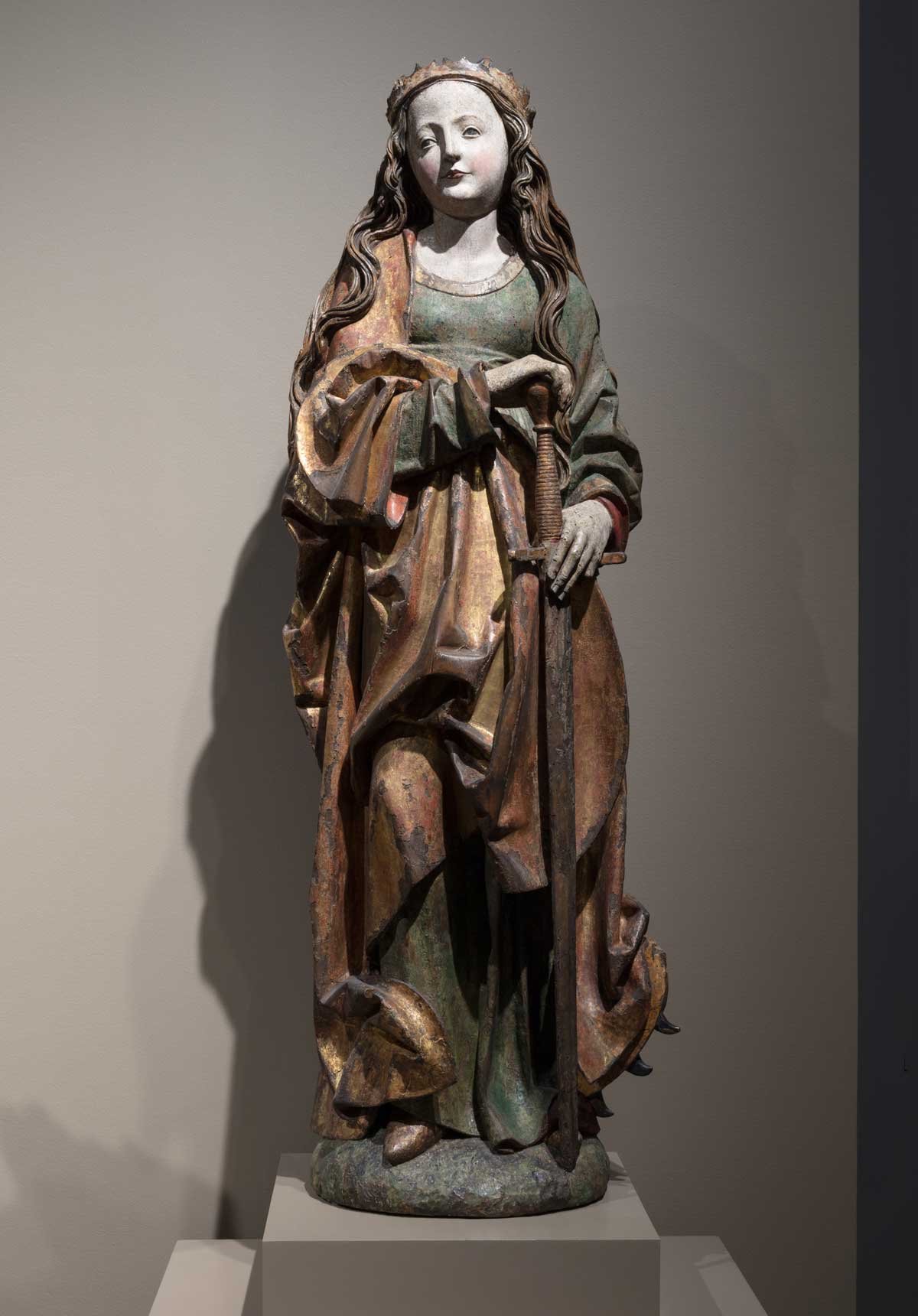
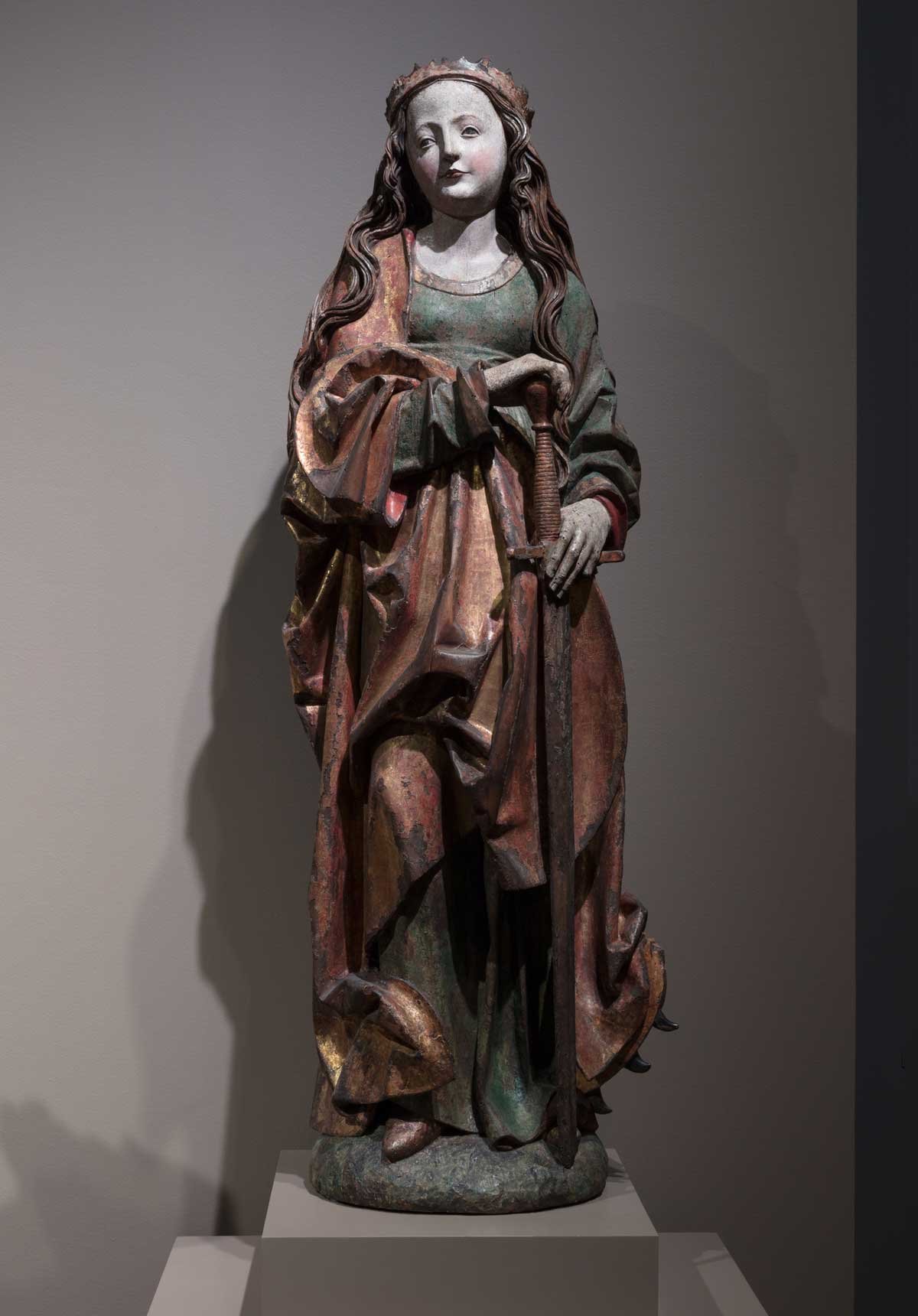
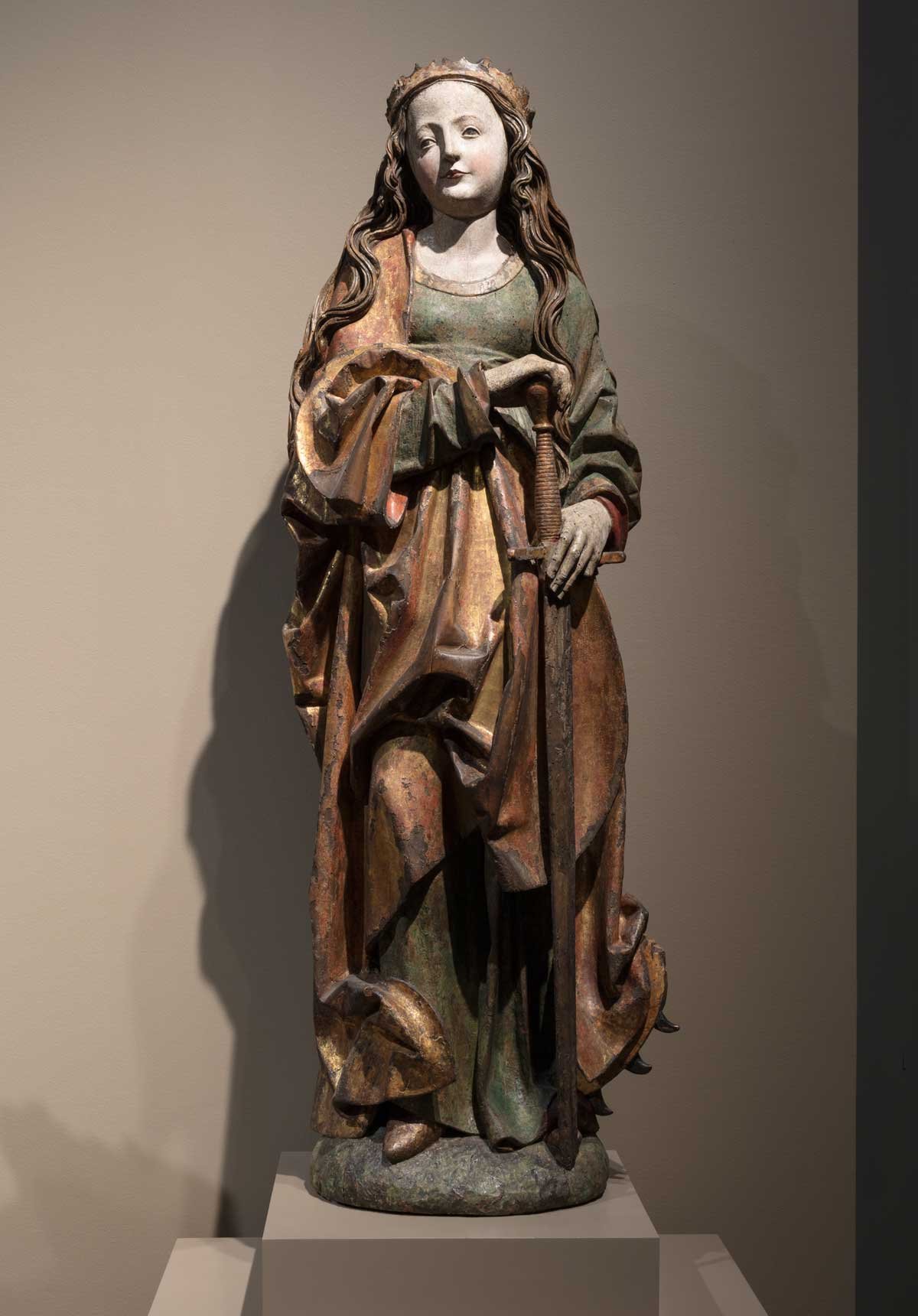
The advantages of color tunable lamps are also apparent in the Art Institute’s modern and contemporary galleries. See the images below for the range of options available with color tuning and wall wash lighting.
Kerri, alongside the Curators and Conservators, ultimately decided to keep object lighting at 2,850K to keep the warm tones on the photographs and wall wash lighting at 3,000K so the high ceilings above the art aren’t completely bare. These settings are consistent with what donors and Curators preferred based on their previous history with the warmth of a halogen source. These settings are now consistently used at similar installations throughout the museum.
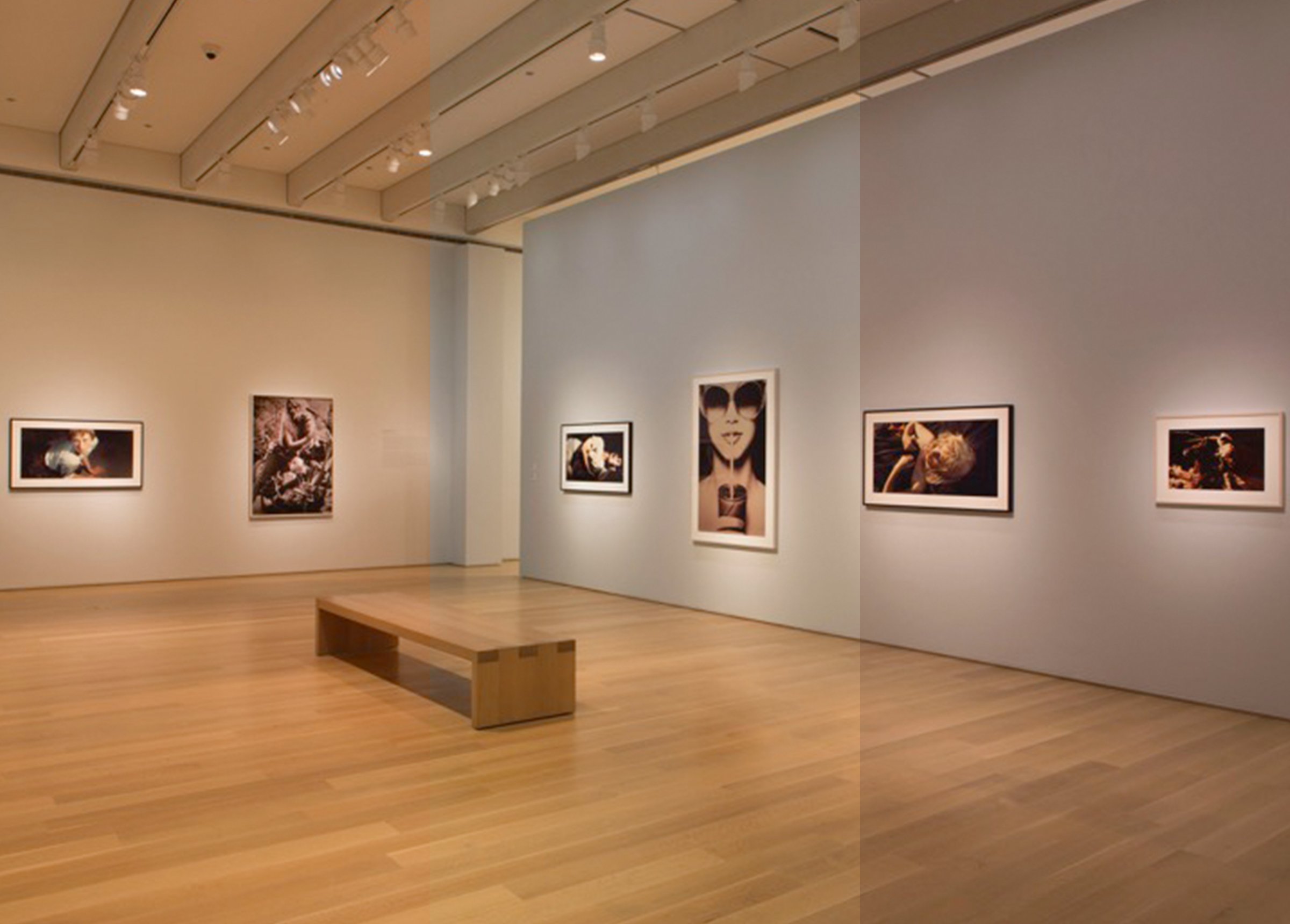
Project photography by George Sobros.
At the time of study, The Art Institute of Chicago was the first museum to ever use color tunable lighting on their art collections. Since its initial, small-scale adoption of color tunable lamps in 2015, the Art Institute has now installed over 6,000 color tunable lamps throughout the museum. From lighting sculptures, to modern photography, to ancient altarpieces, the Art Institute of Chicago’s color tunable lighting has allowed them to play with new possibilities, while still ensuring the highest standard of preservation.
24/7 Technical Support:
1-844-LUTRON1 (588-7661)
lightingsupport@lutron.com
Customer Service:
Monday-Friday 8am- 5pm EST
1-844-LUTRON1 (588-7661)
The Ketra logo, Ketra, TruBeam, Color Lock, and Calibration360 are trademarks or registered trademarks of Lutron Electronics Co., Inc. in the US and/or other countries.
©2025 Lutron Electronics Co., Inc. All rights reserved.
Get inspired with all the best from Lutron and Ketra: exclusive news, project features, and more.